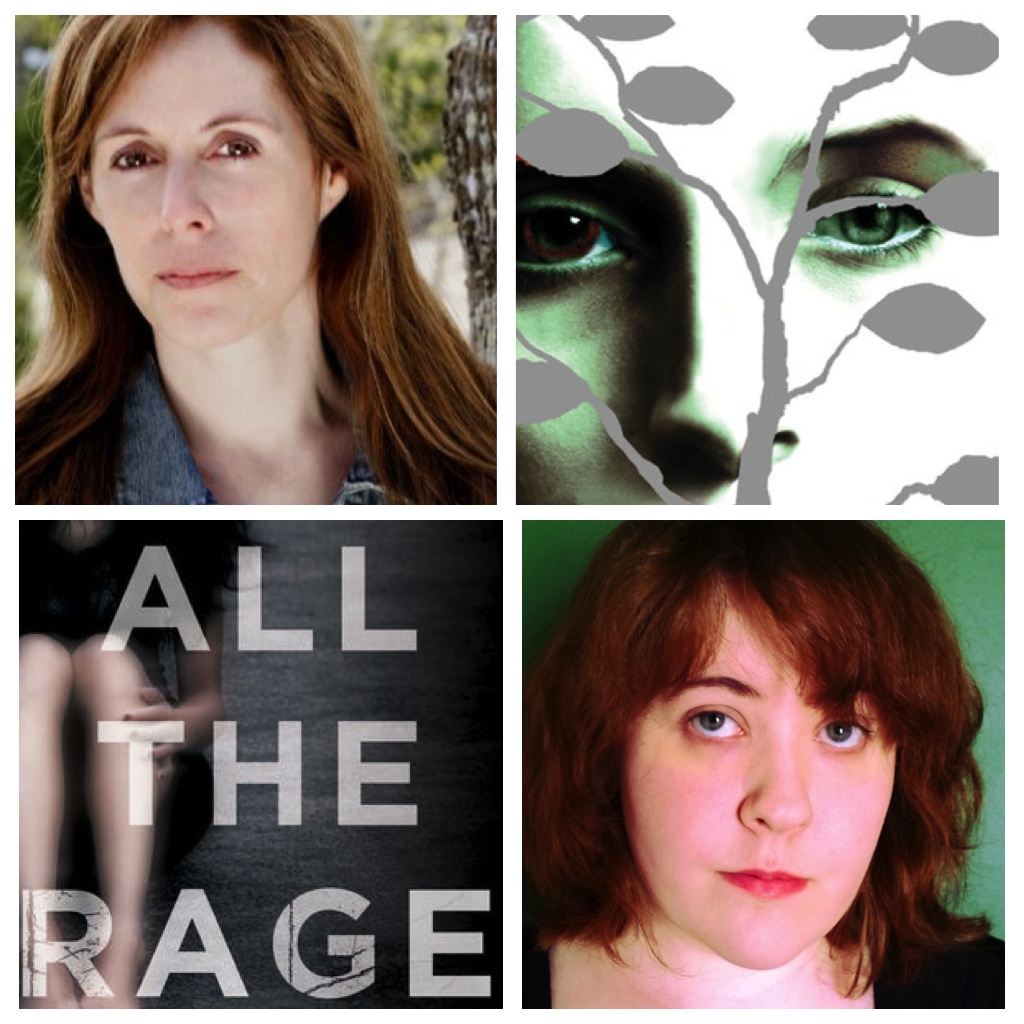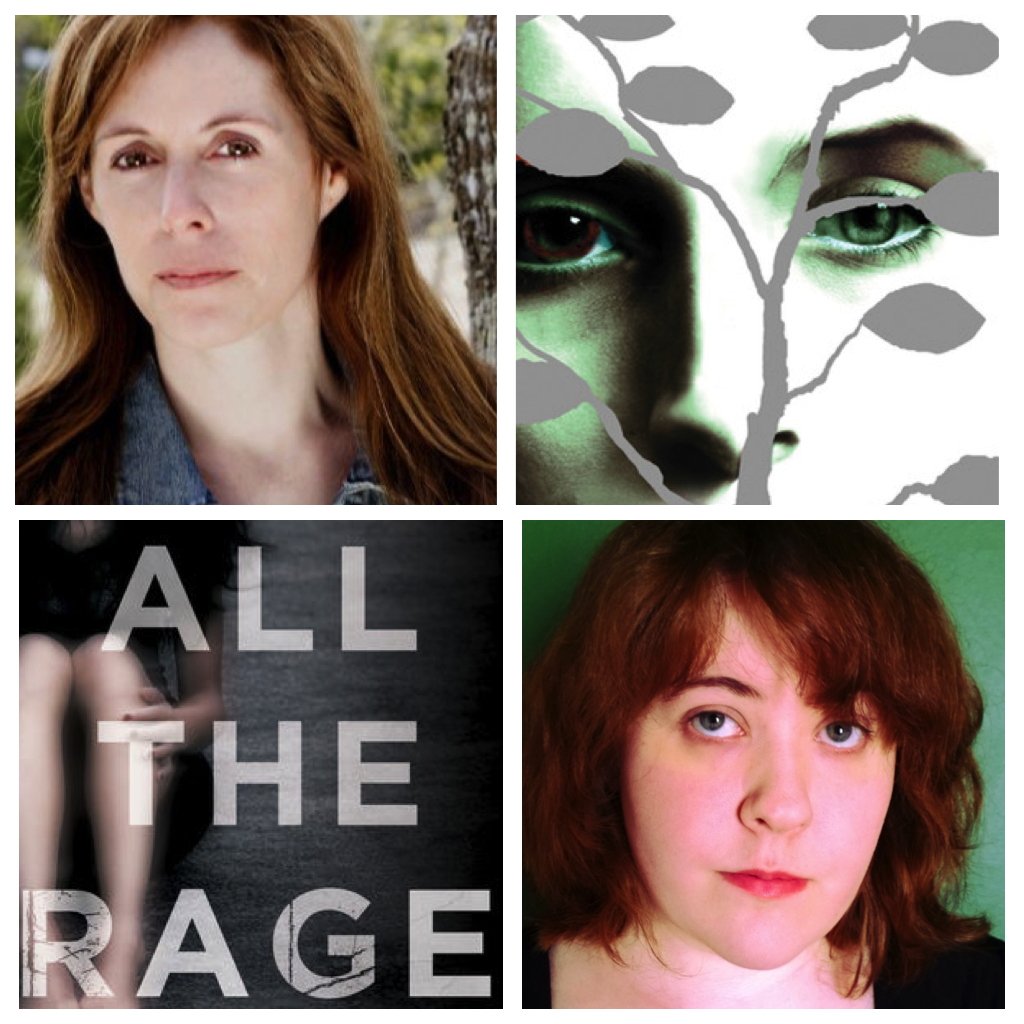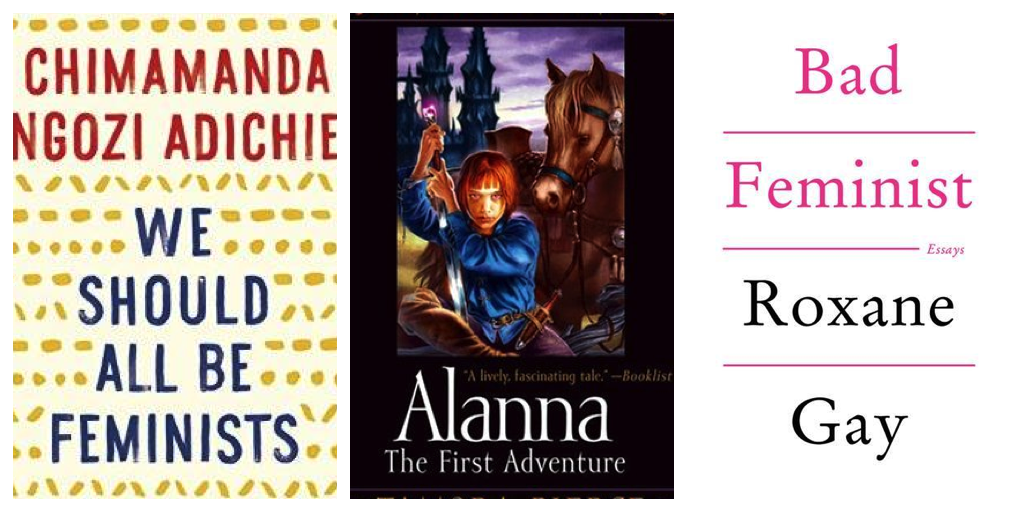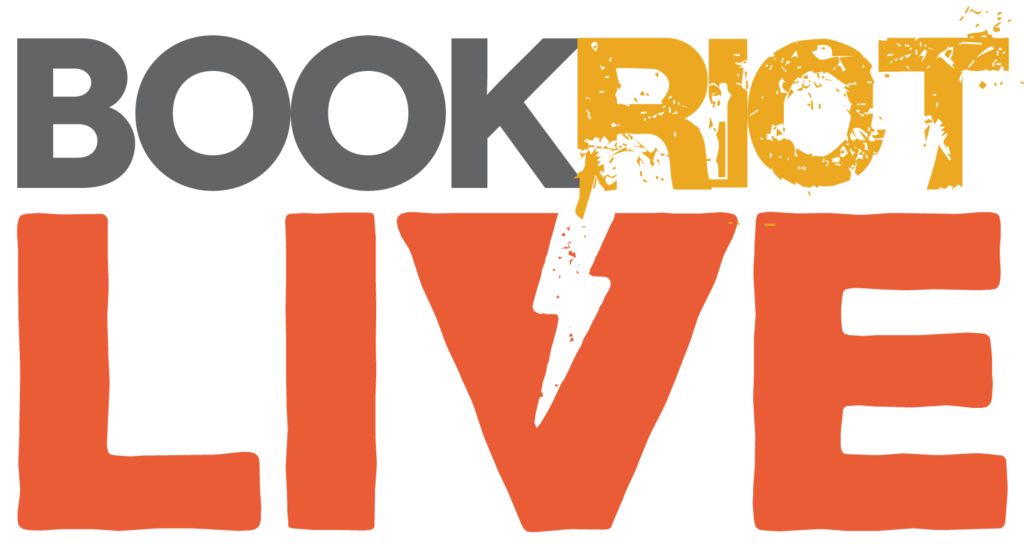
A Conversation About Girls’ Stories with Laurie Halse Anderson and Courtney Summers
It’s been sixteen years since Laurie Halse Anderson’s groundbreaking Speak came out. In those sixteen years, it’s hard to not see that her work not only still holds power, but it’s become more and more relevant.
Speak opened the doors and offered a means of talking about sexual violence for an entire generation — and more — of readers, teens and adults alike. Numerous YA and non-YA titles have broached aspects of sexual assault and rape in the years following, thanks to this book getting the conversation rolling. These books are important because they tackle a topic that we don’t talk openly enough about, and they’re often a means for girls to find comfort, to find hope, and to find a language to use in describing their experiences.
As the conversation around sexual violence has grown and the YA canon of resilience literature expanded, we’ve seen how deeply affecting and widely ranging those experiences can be. We’ve seen authors engaging in tough conversations in ways that lend voice to those who are often voiceless. Likewise, we’ve seen the conversation move from one of silence to one of exposure.
Rape culture is at the heart of Courtney Summers’s All The Rage, which takes the doors Halse Anderson opened with Speak and pushes them even further. As we live in a culture where victims of sexual violence become shunned and outcast and perpetrators are colored as those with their bright futures destroyed, this book takes a razor-sharp lens to what it means to be a victim in a world that will go out of its way to discredit your story.
April is Sexual Assault Awareness Month, an annual campaign to encourage public discourse about sexual violence and work toward education on how to prevent it. Inspired by that, as well as the growing body of work exploring the depths of sexual violence, I wanted to put Laurie and Courtney into the hot seat. What’s changed in the last 16 years when it comes to how we’re talking about sexual violence? What’s remained the same? And more, why is it important to talk about girls’ voices and their stories?
Speak came out 16 years ago and All The Rage released this month. Both of these books explore sexual assault. Speak broke ground in how it looked at the silence surrounding the crime; All The Rage explores the ramifications of rape culture and victim shaming. Let’s talk a little bit about how the conversation surrounding sexual assault has or hasn’t changed in the last decade and a half. Has it? If so, how? Are we getting better, worse, or staying about the same?
Courtney Summers: I was 13 when Speak came out and around that age when I read it. That was my introduction to your work, Laurie, and it was the first book I can remember that really helped me grasp what consent is and what it isn’t. I’m certain I’d seen movies and TV shows that broached or skimmed the subject of rape, but the intensity of Melinda’s POV was eye-opening for me as a teen. Speak is as relevant now as it was when it was first published; rape culture marches on, victim-shaming continues to happen. It’s an ongoing problem, which is why authors are still writing about it today. It’s why I’m writing about it today. I do think the conversation surrounding sexual violence has changed, especially in terms of how and where we’re having it. The Internet, the advent of social media, has expanded the space we talk about these things for better and for worse. We’re able to raise awareness and rally around victims and survivors in large numbers, in real time. We have a direct line of communication where we can challenge and call-out the way media and entertainment covers and portrays stories about sexual violence. But these same avenues are also available to and used by voices who perpetuate rape culture and blame victims.
Laurie Halse Anderson: It’s helpful to expand the time frame. My story and the story of Speak intersect the path of American feminism in some fascinating places.
I was raped in 1975, when I was 13 years old. I lived in a world shaped by adults who had gone through the Depression and WWII. Those adults had been raised by people with late-Victorian attitudes. (My grandmother liked to talk about what it felt like when, as a 10-year-old, her mother voted for the first time.) People a half-generation older than me were protesting the Vietnam War, advocating for civil rights, and birthing the second wave of feminism that brought conversations about sexuality and reproductive rights into the national spotlight.
I wrote Speak in 1996-1997, as a mother whose daughters were entering adolescence. The book and then the movie came out as my kids were going through high school and college. Now I am a grandmother who just finished the graphic novel adaptation of Speak.
There has been some progress; the fact that books like ours are published and read, and that we can have conversations like this are shining examples. But it’s a two-steps-forward, one-step-back, shuffling progress. Some days it feels that for every two steps forward we take, we stumble back three. We are nowhere near wage equality for women, especially for women of color. Advances in technology and social media have brought new sophistication and appalling reach for the asshats who seek to shame, harass, or threaten women and girls. And the rate of of sexual assault has changed very little.
The patriarchy is still going balls-to-the-walls. Sadly.
One of the most positive developments I’ve seen recently are the conversations about privilege in American culture. As we confront and question who controls the narrative, and thus, controls the public version about which lives matter, we will make more significant progress in reducing the numbers of sexual assaults, and increasing support for victims, and prosecuting and jailing rapists.
I am also hopeful that as the women and men who are growing up in a world with robust YA literature become parents, we will finally have a generation that is not afraid to talk to their children about all aspects of human sexuality. I suspect that children who grow up in homes where there are ongoing conversations about consent are less likely to become rapists and more likely to approach sexual intimacy in a healthy and informed way.
One of the criticisms leveraged at both of your books — and others that tackle sexual assault — is that these books are, in essence, “rape books.” Why do we need “rape books” still? Why are authors still writing about this?
CS: All the Rage isn’t the first time I’ve written about sexual violence and I’ve received comments expressing disappointment about how I’m writing “another rape book.” More than once it’s been said to me that we already have “enough” literature on this topic—like there’s some kind of set number and we’re way past it now. The question of why I would write about sexual violence always surprises me because fiction so often reflects what is happening in the world around us. That so many authors are writing about this should be a big indication to people that we live in a rape culture. And if we’re silent about it, if we turn a blind eye to it, we won’t break the cycle. Books about difficult and upsetting subject matter often facilitate discussion and raise awareness. We need to do both if we want to see anything change.
LHA: I reject the label of “rape book” because that’s an oversimplification of the story. Speak is centered around a rape victim, but it is the story of her struggle to find her power to speak up and be heard. Using labels like “rape book” distances people from the narratives. The use of the label is often a flag that signals the speaker’s discomfort talking about sexual assault and/or sexuality in general. Furthermore, labels like “rape book” fall into the same category as “chick lit,” “knit lit,” and “mommy lit.” Patronizing labels applied to books written by women are an attempt to denigrate the work. They piss me all the way off.
But to get to your larger point… The role of the artist in society is to hold up a mirror. We’ll stop writing about rape when rapists stop sexually assaulting people.
(Maybe I should write a book about the crap that women writers have to put up with, too.)
An interesting parallel between your books is the idea of reclaiming one’s self after being a victim. In Speak, Melinda finds herself through her art; in All The Rage, Romy finds it in her routine of applying red lipstick and red nail polish. Their art becomes more than armor for them. It becomes identity. Can you talk about this a bit?
CS: In All the Rage, Romy has a lot of difficulty processing her trauma and the routine of putting on her lipstick and nail polish is what helps her to compartmentalize it. It’s how she separates herself from what happened to her enough that she can get through her day. The make-up is also how Romy directs the way people look at her. She is inescapably ‘The Girl Who Cried Rape’ within her community but when people see her, they see the red first. And even though it’s just for a moment, it’s a moment where she has the tiniest bit of control over their perception of her. The make-up, for Romy, is about controlling her narrative as much as she possibly can when so many others have taken it from her and twisted it.
LHA: I love the way you describes the process: “Their art becomes more than armor for them. It becomes identity.” Art helps us process emotions and experiences before we can find the words. This is particularly important for trauma survivors. Teenagers – who are so vulnerable because the world is crashing towards them at million miles an hour – seek armor wherever they can find it. Art (visual, music, literature, dance) is a healthy form of armor because it creates in the soul the opportunity for growth and transformation. When teens don’t have access to Art, (I’m looking at you, budget-cutting school boards and state governments), they turn to unhealthy armor, like drugs and booze; anything to diminish the confusion and pain.
A key difference in your books is Melinda doesn’t speak up about her assault immediately. Romy’s open about being raped with her peers, as well as her parents. And yet, in both stories, they are girls that are not believed. This isn’t about the “telling.” What’s at work here? Why are we as a culture so quick to dismiss victim’s testimonies and the lived experiences of girls?
CS: We live in a world that polices the way girls dress in schools specifically so boys can learn in ‘distraction-free’ environments. We live in a world that actively wants to deny women reproductive rights. We live in a world where a woman’s accomplishments matter less than how perfect she looks and a world where it’s totally acceptable to tear a woman apart if she doesn’t look perfect enough. We live in world that gets outraged over an all-female Ghostbusters reboot—and all that’s just scratching the surface. It would be nearly impossible not to internalize this stuff, so when I see victim-blaming, when I hear or read comments that victims of sexual violence deserve or ask for it, I see that as an extension and consequence of a world that inundates us daily with the message that girls don’t matter or, if they matter at all, they matter less.
LHA: This is such an important point to consider and Courtney has brought up a lot of good material. I’ll add this: the testimony of victims is disregarded because if it is taken seriously, then the rapists must be arrested, prosecuted, and jailed. And that means a whole lot of guys who don’t like to think of themselves (or their sons) as rapists have to face an ugly truth and deal with the consequences.
America keeps telling two lies to itself: 1) that all rapists are bad guys in the bushes with a gun, and 2) that it’s not rape if (fill in the blank) the victim was wearing sexy clothes, or was on a date with the rapist, or was dancing provocatively, or was drunk or high… the list of sick rationalizations is long and disgusting.
Rape is most frequently (more than two-thirds of the time) committed by someone that the victim knows. Eighty percent of sexual assaults do not involve a weapon. (These statistics and more can be found at: https://rainn.org/statistics)
American Rape Lie 2A) is that all sexual violence victims are female. While our conversation has focused on assaults of women by men, it is important not to overlook the boys and men who are victims of sexual violence, usually at the hands of other men. Our culture blames and won’t listen to those victims, either, which has horrible implications for their healing.
CS: It’s definitely important that we not overlook male victims and survivors of sexual violence and the appalling lack of resources and help available to them. Laurie’s right–it all points to a culture that willfully fails victims because it’s easier and more comfortable to look away.
You both wrote stories where the main character struggles, metaphorically and literally, with finding her voice after she’s been ostracized and shunned by her peers. Yet both narratives highlight the importance of speaking your truth. What do you hope readers will gain from your characters’ struggles and triumphs when it comes to finding their own voices?
CS: It was important for me to highlight how difficult and risky it can be to speak your truth. In All the Rage, Romy reaches a point where it’s what she must do, and it takes a lot of courage for her to do it—and it remains a risk. But if a girl chooses silence that’s not an act of cowardice. It’s often an act of self-preservation in response to not having a safe place. I want readers to walk away from the book understanding why, for many girls, speaking up is not always a viable option and knowing how critical it is to create spaces that are safe enough for others so they can speak up. I want them to take a look at the spaces around them and ask whether or not they’re part of the solution or part of the problem.
LHA: That is a brilliant answer, Courtney!
I only have a couple of things to add it it. Finding the courage to speak your truth is one of the most difficult lessons for teens to learn. Many adults are still struggling with the wounds and scars of their adolescent transition because they have not been able to claim their power and speak that truth.
One of the positive developments of social media is the increased opportunity to speak up, speak out, and listen as others speak. This has brought a hideous backlash in the form of online harassment, death threats, SWATting, etc. I continue to marvel at how pathetic the lives of online trolls must be if they find pleasure in puking online-hatred. Part of me wants to punch them in the throat. Another part tries to understand who they were at age three, at ten, at thirteen. How did they become so warped? Who hurt them? How do we ensure the safety of all people who deserve the ability to speak their truth without fear? How do we help move the culture forward?
Why do you write girls’ stories? Why do they matter?
CS: Writing about girls is something I’ve had to defend over the course of my career. I’ve been told by prospective readers that they’re interested in my work but the only thing holding them back from picking it up is my choice of main character; they think they’re just not going to be able to relate to a female protagonist because she is female. Whatever I choose to write about, whether it be sexual violence, girl-bullying or depression—I will invariably run across comments that reduce the very real struggles girls go through in every possible way. Girls are drama queens, girls have petty catfights, girls in crisis are attention-seeking and on and on. This is what I’m writing against when I write girl stories. But I’ve been fortunate to hear from girl readers who have seen themselves in my books, who have felt less alone because of that, and many who have been inspired to write their own stories—and that’s what I’m writing for. Girls’ stories matter because girls matter.
LHA: Because I matter. My daughters matter. My mother and grandmothers mattered. You, Courtney, and you, Kelly, matter. Every girl, every woman deserves agency, recognition, and respect just as every boy and man does. Respecting all lives as equal and important is the next great leap for our culture to take.
How can advocates — readers, educators, librarians, booksellers, authors — be there and support girls? How can we advance the conversations about sexism and what that entails? Where can we make change?
CS: I firmly believe if you support girls, you should loudly declare yourself a supporter of girls. Don’t take it for granted that they know, let them know you’re there for them. We should always be aware there is room for improvement in the way we approach conversations about sexism. To improve, we need to be able look closely at ourselves and at any biases we’ve internalized, and how those biases might negatively impact what we’re doing or run counter to what we’re trying to achieve. That’s not always an easy thing to do, but it’s necessary. Let’s think about the way we’re gendering books. Let’s stop. Think about the way we mock and dismiss the reading tastes of teenage girls. Let’s not. If you organize public events, look at who you’re inviting to speak at them. Are women represented? If you’re a writer, be conscious of the way you represent women in your work. We should take opportunities to celebrate female authors and female characters. These things add up and they make a difference.
LHA: The best way to support girls is to listen to them. Give them the space and security they need to tell their stories, to ask their questions. We also must surround them with many and varied examples of women choosing to live the lives they want, instead of shutting off their brains and living out the hollow script that some segments of society want them to follow.
Finally, what three books would each of you recommend all girls should read and why?
CS: We Should All Be Feminists by Chimamanda Ngozi Adichie
Adapted from her TED talk—every girl should read it. It’s a fantastic introduction to feminism and provides a great launching point to discussion about feminism.
Bad Feminist by Roxane Gay
Roxane Gay is awesome. From the introduction: “These essays are political and they are personal. They are, like feminism, flawed, but they come from a genuine place. […] I’m raising my voice to show all the ways we have room to want more, to do better.” Her essays give girls a lot to think about, especially moving forward.
Odd Girl Out: The Hidden Culture of Aggression in Girls by Rachel Simmons
This book helped me understand how and why my friends and I expressed our anger toward each other the ways we did in school. Girls are constantly encouraged to be nice at the expense of themselves and Rachel Simmons explores the consequences of that here.
LHA: Bad Feminist, by Roxane Gay gets my vote, too.
Anything by Tamora Pierce, because she is a great writer of strong female characters and because genre fiction can help us see our world with new eyes.
The Handmaid’s Tale, by Margaret Atwood, because that could really happen here and must all fight to prevent it.
____________________














